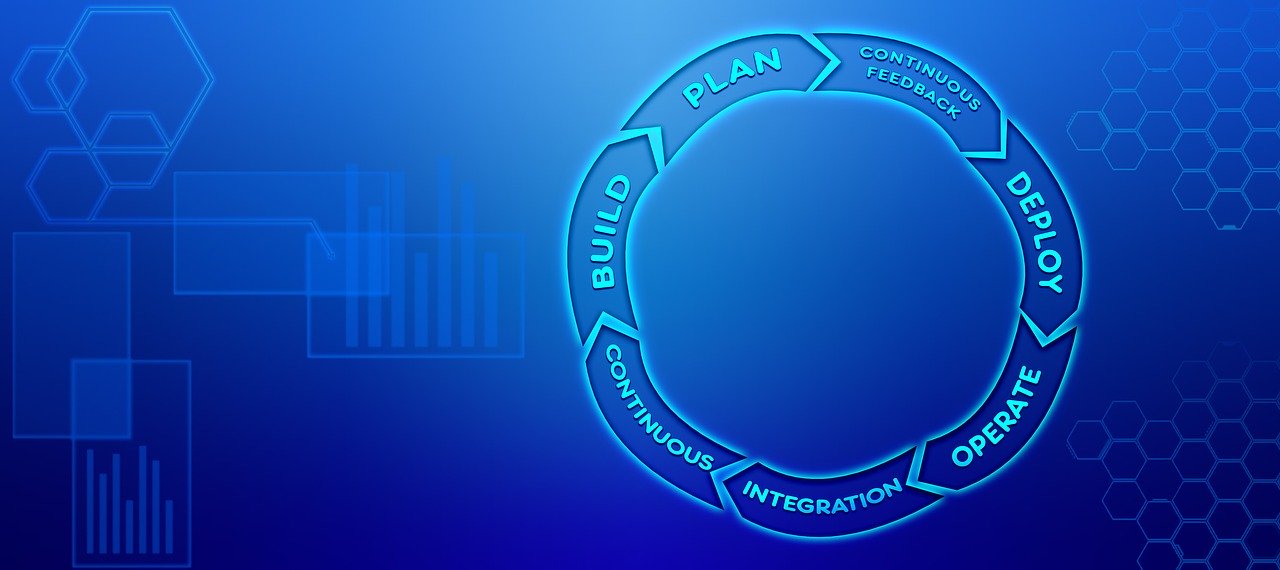Modified on
Fundamentals of Version Control and Test-Driven Development

Skill-Lync
Fundamentals of Version Control and Test-Driven Development
Software developers are involved in the development of innovative products and services consumed by customers across the world. One of the most fundamental features of software development is release control. Practicing software development cannot take place without establishing a control system for releases.
Release control, in simple terms, is everything executed to deliver, identity, test, track, and preserve the software collateral, including files, source code, and anything other outcomes, which forms part of the software product.
This short blog will attempt to help such engineers understand the basics of version control and test-driven development. As a result, you'll be familiar with fundamentals such as the current trends in software development, version control systems, and best practices to execute version control/release control in an efficient manner.

Current Trends in Software Development
1. High-Velocity Short Development Cycles
In most cases, software development is all about rapid iterative development cycles. Earlier, development cycles could last for a month, then they came down to weeks and finally to an hour or even a few minutes.
2. Agile Development
The waterfall approach with its colorful Gantt charts as popular before, but the 21st-century software development uses agile methods to build software. Release control is no different.
3. Control of Development at a Global Scale
That is the way things work due to the global distribution channels for almost all software.
4. Cloud-Based
Release engineering is moving to the cloud, similar to almost all development.
5. Continuous Integration/Continuous Delivery
Dynamic and continuous delivery is becoming quite common.
6. DevOps
No boundaries exist between development and operations anymore. Creation, packaging, and then handing over to ops engineers for putting it to production is no longer the norm.

Integrated Development Environments (IDE)
- Microsoft Visual Studio: Useful for development in Windows or even cross-development.
- Visual Studio Code: Open-source project, supported by Microsoft which works cross-platform and is quite popular
- Eclipse: Java-based integrated development environment. Has the advantage of multiple plug-ins and extensions, but is fading in popularity lately.
While these are 3 of the most used integrated development environments, there are several others available as well.
Choosing Version Control and Testing Tools for Integration to IDE
- Git: The major version control player
- Subversion: Fading in popularity
- Fossil and many others
- Traditional Versioning Control Systems: ClearCase, Perforce, Team Foundation Server
Next Steps After Choosing VCS
1. Integrated Infrastructure Tools
Several infrastructure tools are now integrated. Tools such as GitHub and GitLab bring together version control and build issue tracking, testing, just to make it easy so that you don't have to exert effort to consolidate the environment together piece by piece.
2. Writing Tests Initially
In the age of iterations, test-driven development is a best practice to follow. Therefore, make sure to write your tests first. This point will be discussed in detail in the second installation of this blog.
3. Decide Cloud Infrastructure
Some widely used options are Amazon Web Services and Microsoft Azure.
4. Use Containers
Release control is interesting because containers such as Docker are ubiquitous. Rather than installing a compiler and a linker, developers just bring down a docker container and run their builds.
5. Decide Your Hardware Solution Providers
- Intel x86 architecture servers and Linus operating systems are common.
- The 'Commodity' hardware is provided by Dell, Lenovo, HP, and some other niche players.
- A few other hardware architectures used are Power (AIX), Itanium (HP-UX), SPARC (Solaris).
- Mainframes - commonly used: hypervisors for Linux.
- Digital Signal Processors - usually the ones made by Texas Instruments.
Software Build
Once you have all the pieces in place, it's time to execute a software build. The software build is the steps you take to compile and link your code through your source into object code, and that includes packaging of the code if you are going to add ZIP file or tar file on UNIX or LINUX. Source code and packaging dependencies are all part of the software build.
You should keep them in version control. For example, on Windows, you might use an InstallShield to build and install a program for the application. For Linux, you might build an RPM package making it easy for your customer to install the software that's all part of the build. And the files you build for that needs to be in the source control. It's part of your software, and it's important.
Versioning Best Practices
You can't have quality software if you can't name it. As the development cycles have become faster and shorter, the volume of changes made to software builds has increased. Therefore, numbered releases are quite common.
Numbered releases require a numbering scheme, to avoid confusions and redundancies in the collaborative development process. One of the suggested number schemes is the four-digit scheme below that provides the right balance between being short and flexible at the same time:
- V - Version that represents high-level compatibility. For example, for a software package, version 2 has a major change from version 1. The change could occur in terms of aspects such as hardware platform, file formats, etc
- R - Release is often used when features are added to the software without changing the overall compatibility with platforms or other fundamental aspects. For example, if a software version is 2.1 and then updated to 2.2, the high-level compatibility is the same, but features are added.
- E - Engineering level indicates the addition of bug fixes, but no change in features. The difference between software 2.2.1 and 2.2.3 is that there have been two iterations of bug-fixing
- B - Build level is changed every time you make a build. The difference between software 2.2.3.1 and 2.2.3.2 is nothing except the build is updated.
Final Words
Software development has permeated almost all industries in the 21st century, including traditional processes in fields such as mechanical engineering. As such, release and version control is a crucial aspect for software engineers working the mechanical engineering related sectors such as automotive as well.
If you are interested in learning about the basics of version control and test-driven development, visit Skill-Lync for more information.
Author
ShruthiKrishnan
Author

Skill-Lync
Subscribe to Our Free Newsletter

Continue Reading
Related Blogs
Explore the fundamentals of vehicle dynamics and ultimate trends in the field from design and modeling to control with Skill Lync's exclusive course on the subject. Read about how Skill-Lync's CAE courses can help you get employed.
28 Jul 2020
In this article, we will briefly discuss the working, applications, and features of the one-dimensional systematic simulation tool, GT-Power, in Emission Control Strategy, engine calibration, hybrid vehicle modeling. Read about how Skill-Lync's CAE courses can help you get employed.
28 Jul 2020
This article offers a brief introduction to the globally accepted standard of Geometric Dimensioning and Tolerancing, and its importance for the entire manufacturing process. Read about how Skill-Lync's CAE courses can help you get employed.
28 Jul 2020
In this blog we will read about Going a step into Biomechanics and how Skill-Lync's CAE course will help you get employed.
09 May 2020
The powertrain is the most prominent source of vibrations that affects the driving experience for the people on board. This blog from Skill-Lync examines these vibrations to help enhance that experience.
21 Aug 2020
Author

Skill-Lync
Subscribe to Our Free Newsletter

Continue Reading
Related Blogs
Explore the fundamentals of vehicle dynamics and ultimate trends in the field from design and modeling to control with Skill Lync's exclusive course on the subject. Read about how Skill-Lync's CAE courses can help you get employed.
28 Jul 2020
In this article, we will briefly discuss the working, applications, and features of the one-dimensional systematic simulation tool, GT-Power, in Emission Control Strategy, engine calibration, hybrid vehicle modeling. Read about how Skill-Lync's CAE courses can help you get employed.
28 Jul 2020
This article offers a brief introduction to the globally accepted standard of Geometric Dimensioning and Tolerancing, and its importance for the entire manufacturing process. Read about how Skill-Lync's CAE courses can help you get employed.
28 Jul 2020
In this blog we will read about Going a step into Biomechanics and how Skill-Lync's CAE course will help you get employed.
09 May 2020
The powertrain is the most prominent source of vibrations that affects the driving experience for the people on board. This blog from Skill-Lync examines these vibrations to help enhance that experience.
21 Aug 2020
Related Courses
